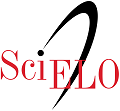El registro y el inicio de sesión son necesarios para enviar elementos en línea y para comprobar el estado de los envíos recientes. Ir a Iniciar sesión a una cuenta existente o Registrar una nueva cuenta.
Lista de comprobación para la preparación de envíos
Como parte del proceso de envío, los autores/as están obligados a comprobar que su envío cumpla todos los elementos que se muestran a continuación. Se devolverán a los autores/as aquellos envíos que no cumplan estas directrices.- El envío no ha sido publicado previamente ni se ha sometido a consideración por ninguna otra revista (o se ha proporcionado una explicación al respecto en los Comentarios al editor/a).
- El archivo de envío está en formato OpenOffice, Microsoft Word, RTF o WordPerfect.
- Siempre que sea posible, se proporcionan direcciones URL para las referencias.
- El texto tiene un interlineado sencillo, un tamaño fuente de 12 puntos, se utiliza cursiva en lugar de subrayado (excepto en las direcciones URL), y todas las ilustraciones, figuras y tablas se encuentran colocadas en los lugares del texto apropiados, en vez de al final.
- El texto reúne las condiciones estilísticas y bibliográficas incluidas en Pautas para el autor/a, en Acerca de la revista.
- En el caso de enviar el texto a la sección de evaluación por pares, se siguen las instrucciones incluidas en Asegurar una evaluación anónima.
Declaración de privacidad
Los nombres y las direcciones de correo electrónico introducidos en esta revista se usarán exclusivamente para los fines establecidos en ella y no se proporcionarán a terceros o para su uso con otros fines.






1.png)






